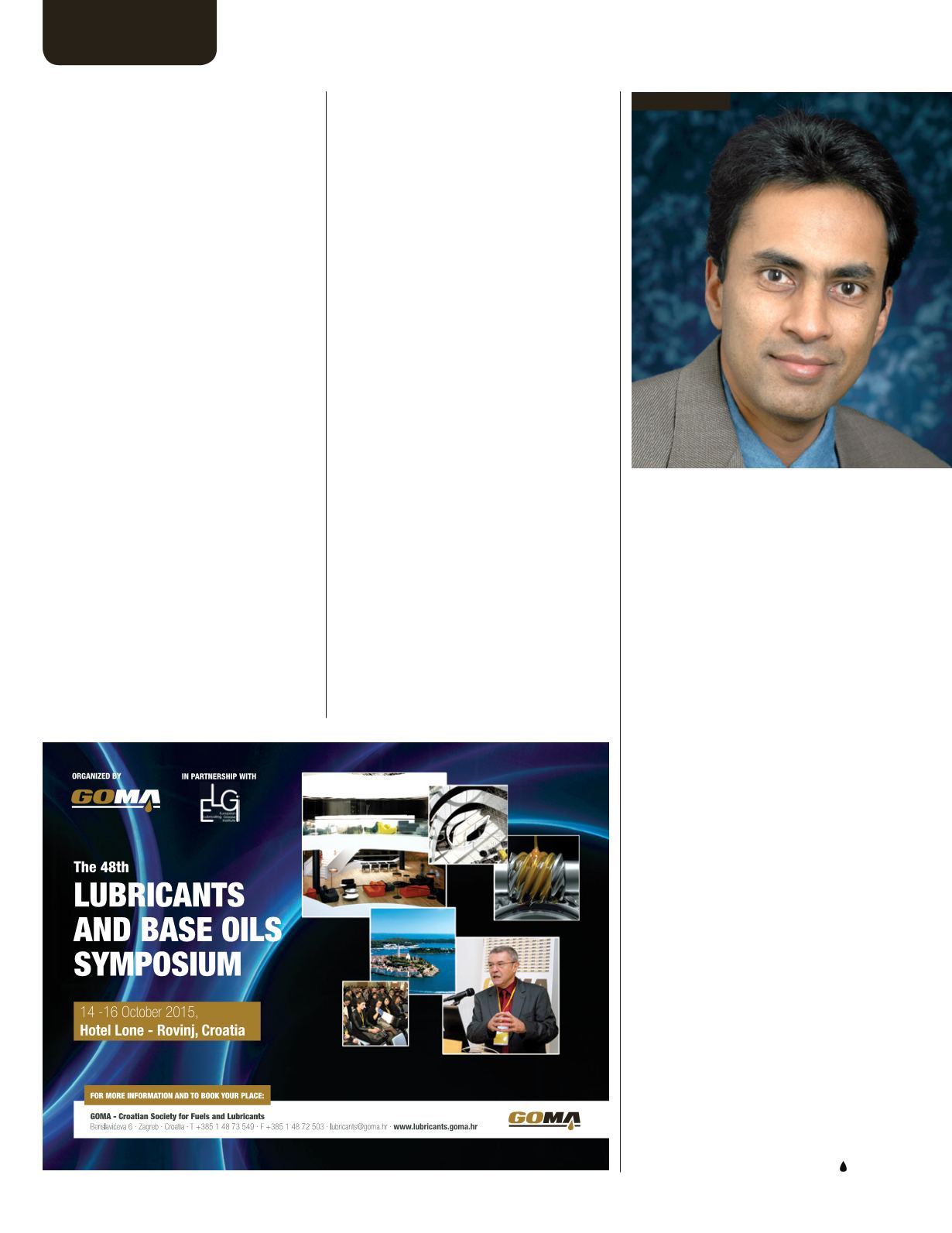
FUELS & LUBES INTERNATIONAL
Quarter Two 2015
16
can be retro-fitted into existing Dimersol
plants. A combined Dimersol-Difasol process
or biphasic Difasol system seems to be better
for several reasons: better use of the catalyst
with reduced costs of both catalyst and catalyst
disposal, better dimer selectivity, higher yield
and smaller reactor size needed.
BASF also has worked on ILs at its
headquarters in Ludwigshafen, Germany.
About a decade ago, BASF introduced the
Biphasic Acid Scavenging utilising Ionic
Liquids (BASIL™) process at a technology
transfer forum. BASIL has been commercially
used, mainly in the pharmaceutical industry.
BASF’s BASIL™ “smart” process technology uses
ILs to scavenge acids that are by-products of
organic processes such as esterification, thereby
preventing decomposition of the primary
reaction product or preventing unwanted side-
reactions. As the 1-alkyl imidazole reacts with
the acid, an alkyl imidazolium salt is formed,
which is an IL at the reaction temperature. The
liquid alkyl imidazolium salt can then be easily
removed by a liquid-liquid phase separation. In
addition, economic reclamation of the 1-alkyl
imidazole through deprotonation is possible.
BASIL™ is more than a technology for
acid scavenging; 1-methylimidazole also
acts as a catalyst and speeds up the reaction
considerably. Consequently, it makes it possible
to use a narrow, continuously operated jet
reactor instead of a stirring vessel. The reactor
is only thumb-sized but is able to produce
hundreds of tonnes of product. Since 2002, the
BASIL™ process has been used in the routine
production of alkoxyphenylphosphines,
handling ILs on a multi-tonne scale.
Alkoxyphenylphosphines are important
raw materials to produce BASF’s Irgacure®
photoinitiators, which are used to cure coatings
and printing inks by exposure to UV light.
BASF has other IL products, such as
the Basionics
TM
line, which are used e.g.
as antistatic additives for a broad range of
applications. They are also used as additives for
coatings, adhesives, molding compounds and
foams.
Other future industrial
applications
In 1997, BP Chemicals described the
oligomerisation of a mixture of alpha olefins
(C6-C10) using acidic ILs to prepare synthetic
lubricating oil base stocks with desirable
lubricating properties such as a low pour
point and a high viscosity index. In more
recent years, Chevron has also researched
the possibility of oligomerisation without an
organic diluent and creating high viscosity
polyalphaolefins. A look into the use of
chloroaluminate ILs as liquid acid catalyst
by BP researchers to produce ethylbenzene
through the alkylation of benzene with benzene
didn’t get beyond the laboratory because of cost
issues.
A research group in China led by
Xiaoqiang Fan and Liping Wang recently
published its findings on ILs as possible high-
performance space lubricating greases in the
American Chemical Society Applied Materials
& Interfaces Journal. The group believes that
the highly conductive IL greases possess
good thermal stability, good adaptive abilities
to space environment, as well as excellent
anti-wear and friction reduction similar to
Aswath’s and Qu’s findings.
Future space travel and space tourism and the
entry of private sector companies in the space
industries might be a new application for ILs.
Even with the recent setback due to the explosion
of Virgin Galactic’s SpaceShipTwo Enterprise last
October, the push for innovation and research in
this field continues.
ILs also have been used to improve the
transesterification reaction of triglycerides
(vegetable oils) to produce biodiesel. Instead of
using base catalysts (NaOH, NaMe or KOH) in
the transesterification reaction of triglycerides
with methanol, ILs such as Bronsted, Lewis and
chloroaluminate acid ionic liquids can be used.
They have been able to reuse/recycle the catalyst
without loss of catalytic activity with good yield,
but the processes still have significant limitations,
such as long reaction times and destruction of
catalyst when there is water in the reactant.
The use of ILs in biomass transformation, such
as in processing lignocellulosic and cellulosic
materials, has been investigated. However, the
recovery and reuse of ILs after using them to
dissolve biomass is difficult and expensive.
Lastly, advanced battery technologies are
another potential application. Their use in lithium
and lithium-ion cells, sodium and sodium-ion
cells, magnesium batteries, metal-air batteries and
dye-sensitized solar cells are all being studied.
In addition, there are super capacitors, thermo-
electrochemical cells and actuators that can
benefit from the use of ILs.
The tuneability of ILs is the key to their
versatility. This most interesting and promising
property of ILs will keep them in a number of
researchers’ arsenal as a potential answer to
the industry’s needs, which might successfully
connect academic research with industry—
catapulting ILs to commercial reality.
F E A T U R E
Pranesh Aswath


